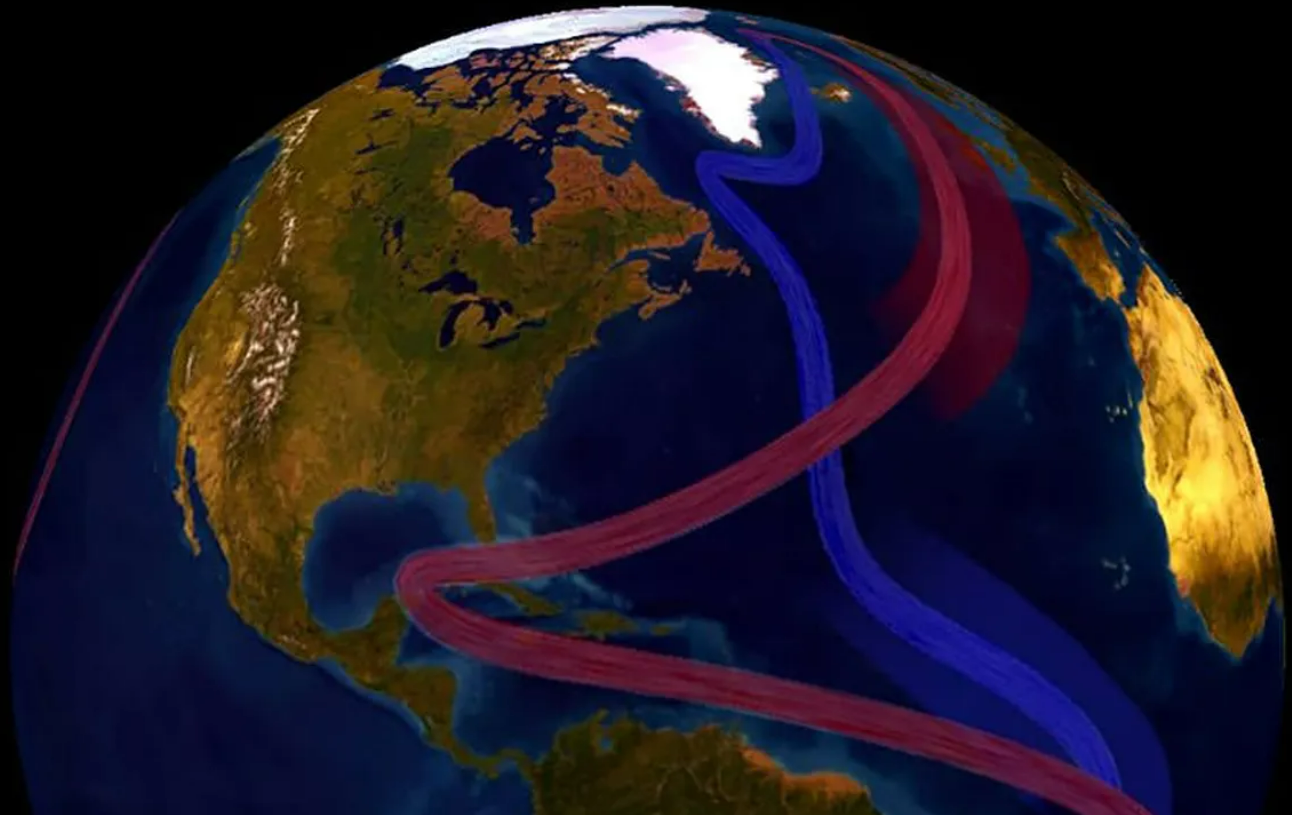Last week, you might have seen a bunch of news stories about a new study that found the Atlantic Meridional Overturning Circulation (AMOC), “the conveyor belt of the ocean” that carries warm water from the tropics northwards to the North Atlantic, is potentially facing collapse within the century. Some fairly sensational reporting of the study followed swiftly – much to the annoyance of many scientists – with suggestions that the Gulf Stream may collapse in a couple of years. So, what’s actually going on?
The general gist of the news stories you read were true to the study, but a few finer details were a little off. Some scientists have also pointed out that the findings of the research should be read with caution as this territory is far from settled science.
As IFLScience reported last week, the new study found there’s a 95 percent certainty that the AMOC will collapse between 2025 and 2095 if current greenhouse gas emissions persist. Their data suggested this will most likely occur in 34 years, around 2057. At its earliest, they found, it could collapse as early as 2025.
First up, some outlets suggested that the Gulf Stream was set to collapse, but that’s not quite accurate. The AMOC is sometimes nicknamed the Gulf Stream System, but that shouldn’t be confused with the Gulf Stream itself.
“It is very important to distinguish between the Gulf Stream and the AMOC. The AMOC is equal to the Gulf Stream System, but AMOC is not equal to the Gulf Stream. The Gulf Stream is a wind-driven current that flows along the east coast of the USA, separates from it at about 40 degrees north latitude and flows towards the center of the Atlantic, from where it is called the North Atlantic Current,” commented Dr Levke Caesar, a climate physicist who studies the AMOC at the University of Bremen, who was involved in the study, in a statement.
“The Gulf Stream system – the AMOC – refers to the northward transport of warm, salty surface currents, and southward return flow at depth and covers the whole length of the Atlantic. Gulf Stream and Gulf Stream system certainly overlap, but they are not identical,” Dr Caesar added.

Running AMOC: the Atlantic Meridional Overturning Circulation transports warm surface water from the tropics to the Northern Hemisphere, then cold deep water is circulated back south.
Image credit: NOAA.
Secondly, some scientists have taken issue with the broader finding that a total collapse is likely in just a few decades. Even by the study’s own conclusions, a collapse by 2025 is the absolute earliest. Statistically, it’s unlikely and far more likely to collapse in the latter half of the 21st century.
Their study was also based on mathematical analysis, which doesn’t necessarily capture the complexity of the situation
Nevertheless, previous studies have indicated that the AMOC is undergoing changes in response to the climate crisis. Most come to the conclusion that it is slowing down and flowing at its weakest rate for centuries.
Whether it will reach its “tipping point” and totally halt within this century is a big claim, which some believe is a little premature to make.
“Personally, I am surprised that the authors derive such far-reaching conclusions regarding the future development of the AMOC from this purely mathematical analysis. In my view, the results of the study are not transferable to the actual future development of the AMOC. An abrupt collapse of the AMOC – as described in the 6th IPCC Assessment Report – is still not to be expected in the foreseeable future,” added Professor Johanna Baehr from the Institute of Oceanography at the University of Hamburg, Germany.
With all this said, the study is still an important piece of the puzzle and shouldn’t be totally chucked out the window.
Despite its promise of objectivity, science is not an instant fact-producing machine. It’s an often slow process that reaches a consensus through a back-and-forth of whatever empirical evidence is found. The latest AMOC study may be on the more extreme side of the debate, but that’s all part of the balancing act.
“There is still large uncertainty where the tipping point of the AMOC is, but the new study adds to the evidence that it is much closer than we thought just a few years ago,” noted Professor Stefan Rahmstorf, Professor of Physics of the Oceans at the University of Potsdam.
“As always in science, a single study provides limited evidence, but when multiple approaches lead to similar conclusions this must be taken very seriously. Especially when we’re talking about a risk that we really want to rule out with 99.9 percent certainty. The scientific evidence now is that we can’t even rule out crossing a tipping point already in the next decade or two,” concluded Rahmstorf.
All “explainer” articles are confirmed by fact checkers to be correct at time of publishing. Text, images, and links may be edited, removed, or added to at a later date to keep information current.
Source Link: Is The Gulf Stream Really Going To Collapse In Just A Few Years?